
Interview with Bolle Tham and Martin Videgård
Publisher
Petr Šmídek
14.05.2018 21:30
Petr Šmídek
14.05.2018 21:30
Czech Republic
České Budějovice
Bolle Tham
Martin Videgård
Tham & Videgård Arkitekter
The interview with representatives of the Stockholm office Tham & Videgård took place on May 3, 2018, on the occasion of their lecture and the opening of their exhibition "In Detail" organized at the Gallery of Contemporary Art of the House of Art in České Budějovice.
Your lives and professional careers are closely linked to Stockholm. What does this city mean to you? Is the Swedish scene different from contemporary Scandinavian architecture?
MV: It's difficult to evaluate or categorize something when you are directly involved in the environment. Generally, the Scandinavian approach to architecture can be described as having always had a close relationship with nature. We have also been a very poor region for a long time—let's say until the end of World War II—before our economy started to thrive, allowing us to begin building a welfare state, which is generally true for all Scandinavian countries. However, if we were to look for differences among them and focus on architecture, then in Sweden—unlike Finland or Denmark—we do not have any clear architectural stars. We once had Lewerentz or Asplund, but they are long gone. In Denmark, they have Arne Jacobsen. In Finland, it was Alvar Aalto, who is still regarded as their architectural god. We do not have such great masters to identify with, which can, on the other hand, provide us with a certain freedom.
You have been working together on projects for more than twenty years. A certain culmination can be considered the opportunity to design a new building for the architecture school that you previously attended. What specific aspects did you emphasize while designing the architecture school in Stockholm? And conversely, what do you generally consider to be the most important in architectural education?
BT: The principles of architectural education are fundamentally clear. The student can decide whether to agree with these curricula or go their own way. We lean towards a free teaching method, which may sound positive but is also more difficult, as you have to ask yourself many questions. It is also important for the study of architecture to understand values and to familiarize oneself with the general qualities applicable to our field. In the case of our design for the architecture school in Stockholm, the relationship to the site was important, as well as meeting the building program, but indirectly in the form of exposed surfaces and maintaining a workshop appearance so that you feel you are not dealing with a fragile object where you shouldn't worry about putting plans on the wall. At the same time, it is a very complex design with numerous meandering folds, where no room is the same and almost no element repeats. It clearly expresses a character that you can agree with or disagree with.
MV: But back to the study program. Ideally, we should learn at school how to use the tools necessary for practicing the profession of architecture. These should be logically evaluated by the student and come up with their own methods during design. You cannot start before learning to master your tools. It's similar to a carpenter who cannot build a house until he learns to cut and drill. I believe that many architecture schools lack...
BT: ...craftsmanship...
MV: …but also knowledge of history and everything that follows from it. Whether I mean tectonics or construction techniques. We can learn a lot from history, which is more relevant today than we realize.
I know that you try to avoid naming references or creators in the history of Swedish architecture, to be unique and go your own way. You don’t have to be specific, but looking from the outside, Swedish architecture seems more intertwined with history. How is your work connected to the Swedish environment? Could you design a building anywhere in the world, following the example of world architectural stars?
MV: I believe we can build in places beyond our roots. Quite the opposite, we greatly appreciate getting the opportunity to construct in cultures with different building traditions. We have developed methods that can be applied anywhere. So, it certainly does not pose a problem for us. By the way, these days we are participating in a major competition in Prague, so we will see if the method works and if our design succeeds.
In your work, two positions can be observed: small family houses leading a dialogue with the vast landscape and large public buildings in the midst of historical development. Is there a common approach or rule for designing these two different types of buildings in different conditions?
BT: Yes.
MV: Yes, over time we have developed our own method for analyzing concepts that we can apply to any scale.
Martine, you studied interior architecture at Konstfack. When designing interiors, you choose items from the design masters of the past century. Have you had the opportunity to design your own furniture for your homes as well?
MV: What I haven't mentioned yet is that Bole and I work together on all projects, and we have a process where we do not perceive differences between scales. Although we are architects with slightly different backgrounds, as I studied interior design for several years. At the beginning of our career, we started with small interior designs. Over time, the projects grew larger, but the approach remained the same.
BT: We do not make distinctions between scales. We don’t prioritize one at the expense of another. Currently, we are intensively working on designs for lamps that are to be produced. We have also designed a range of our own tables and chairs. In the beginning, we studied art intensively. Without realizing it directly, we became very interested in the historical position of the architect, who was responsible for the complete work, including the boring parts such as economics and management, as well as the smallest details like selecting switches or designing door handles. Whenever we have the opportunity, we try to delve into the design down to the smallest detail. It is a fact that today many architectural elements are produced industrially, so we cannot always design our own furniture, and we have to choose from a rich selection of ready-made products, which is fine. As the number of projects grows and the scale of buildings increases, so does our collection of our own interior accessories that we can use.
MV: What we are trying to convey by describing our way of working is that we feel like creators who care for the built environment. In any scale, from urban design to a door handle and everything in between. Architects should perceive this responsibility holistically and not extract individual parts.
In your work, on the one hand, one can see roots and subconsciously recall the familiar, but with a closer examination of the floor plans, one can uncover an effort to experiment with layouts and continuously seek better ways of living. Is this the case?
BV: In every project, we seek unique spaces, but it depends on what exactly you have in mind.
MV: We cannot invent a new space. Everything has already been discovered. It always depends on the function and the proper placement in context.
BV: Perhaps you meant the way of exploration. In every project, we strive to find a new path that offers an individual experience.
Juhani Pallasmaa describes your work as “Sensuous rationality.” Would you agree with him?
MV: I think he described it beautifully. We see in architecture that it can be both pragmatic and beautiful at the same time. It would be a shame if architecture were only closely tied to efficiency and economics. Rational aspects take care of the possibilities of how to realize the project. However, houses must also be beautiful and offer people an experience that they will retain for a long time.
Your lives and professional careers are closely linked to Stockholm. What does this city mean to you? Is the Swedish scene different from contemporary Scandinavian architecture?
MV: It's difficult to evaluate or categorize something when you are directly involved in the environment. Generally, the Scandinavian approach to architecture can be described as having always had a close relationship with nature. We have also been a very poor region for a long time—let's say until the end of World War II—before our economy started to thrive, allowing us to begin building a welfare state, which is generally true for all Scandinavian countries. However, if we were to look for differences among them and focus on architecture, then in Sweden—unlike Finland or Denmark—we do not have any clear architectural stars. We once had Lewerentz or Asplund, but they are long gone. In Denmark, they have Arne Jacobsen. In Finland, it was Alvar Aalto, who is still regarded as their architectural god. We do not have such great masters to identify with, which can, on the other hand, provide us with a certain freedom.
You have been working together on projects for more than twenty years. A certain culmination can be considered the opportunity to design a new building for the architecture school that you previously attended. What specific aspects did you emphasize while designing the architecture school in Stockholm? And conversely, what do you generally consider to be the most important in architectural education?
BT: The principles of architectural education are fundamentally clear. The student can decide whether to agree with these curricula or go their own way. We lean towards a free teaching method, which may sound positive but is also more difficult, as you have to ask yourself many questions. It is also important for the study of architecture to understand values and to familiarize oneself with the general qualities applicable to our field. In the case of our design for the architecture school in Stockholm, the relationship to the site was important, as well as meeting the building program, but indirectly in the form of exposed surfaces and maintaining a workshop appearance so that you feel you are not dealing with a fragile object where you shouldn't worry about putting plans on the wall. At the same time, it is a very complex design with numerous meandering folds, where no room is the same and almost no element repeats. It clearly expresses a character that you can agree with or disagree with.
MV: But back to the study program. Ideally, we should learn at school how to use the tools necessary for practicing the profession of architecture. These should be logically evaluated by the student and come up with their own methods during design. You cannot start before learning to master your tools. It's similar to a carpenter who cannot build a house until he learns to cut and drill. I believe that many architecture schools lack...
BT: ...craftsmanship...
MV: …but also knowledge of history and everything that follows from it. Whether I mean tectonics or construction techniques. We can learn a lot from history, which is more relevant today than we realize.
I know that you try to avoid naming references or creators in the history of Swedish architecture, to be unique and go your own way. You don’t have to be specific, but looking from the outside, Swedish architecture seems more intertwined with history. How is your work connected to the Swedish environment? Could you design a building anywhere in the world, following the example of world architectural stars?
MV: I believe we can build in places beyond our roots. Quite the opposite, we greatly appreciate getting the opportunity to construct in cultures with different building traditions. We have developed methods that can be applied anywhere. So, it certainly does not pose a problem for us. By the way, these days we are participating in a major competition in Prague, so we will see if the method works and if our design succeeds.
In your work, two positions can be observed: small family houses leading a dialogue with the vast landscape and large public buildings in the midst of historical development. Is there a common approach or rule for designing these two different types of buildings in different conditions?
BT: Yes.
MV: Yes, over time we have developed our own method for analyzing concepts that we can apply to any scale.
Martine, you studied interior architecture at Konstfack. When designing interiors, you choose items from the design masters of the past century. Have you had the opportunity to design your own furniture for your homes as well?
MV: What I haven't mentioned yet is that Bole and I work together on all projects, and we have a process where we do not perceive differences between scales. Although we are architects with slightly different backgrounds, as I studied interior design for several years. At the beginning of our career, we started with small interior designs. Over time, the projects grew larger, but the approach remained the same.
BT: We do not make distinctions between scales. We don’t prioritize one at the expense of another. Currently, we are intensively working on designs for lamps that are to be produced. We have also designed a range of our own tables and chairs. In the beginning, we studied art intensively. Without realizing it directly, we became very interested in the historical position of the architect, who was responsible for the complete work, including the boring parts such as economics and management, as well as the smallest details like selecting switches or designing door handles. Whenever we have the opportunity, we try to delve into the design down to the smallest detail. It is a fact that today many architectural elements are produced industrially, so we cannot always design our own furniture, and we have to choose from a rich selection of ready-made products, which is fine. As the number of projects grows and the scale of buildings increases, so does our collection of our own interior accessories that we can use.
MV: What we are trying to convey by describing our way of working is that we feel like creators who care for the built environment. In any scale, from urban design to a door handle and everything in between. Architects should perceive this responsibility holistically and not extract individual parts.
In your work, on the one hand, one can see roots and subconsciously recall the familiar, but with a closer examination of the floor plans, one can uncover an effort to experiment with layouts and continuously seek better ways of living. Is this the case?
BV: In every project, we seek unique spaces, but it depends on what exactly you have in mind.
MV: We cannot invent a new space. Everything has already been discovered. It always depends on the function and the proper placement in context.
BV: Perhaps you meant the way of exploration. In every project, we strive to find a new path that offers an individual experience.
Juhani Pallasmaa describes your work as “Sensuous rationality.” Would you agree with him?
MV: I think he described it beautifully. We see in architecture that it can be both pragmatic and beautiful at the same time. It would be a shame if architecture were only closely tied to efficiency and economics. Rational aspects take care of the possibilities of how to realize the project. However, houses must also be beautiful and offer people an experience that they will retain for a long time.
The English translation is powered by AI tool. Switch to Czech to view the original text source.

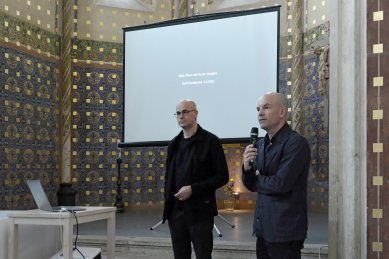


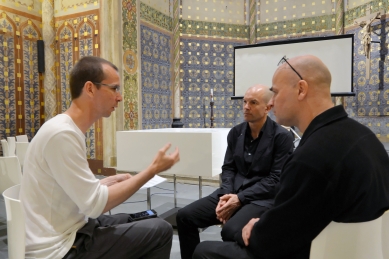

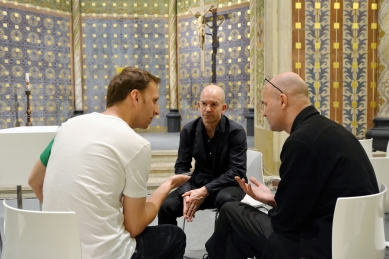
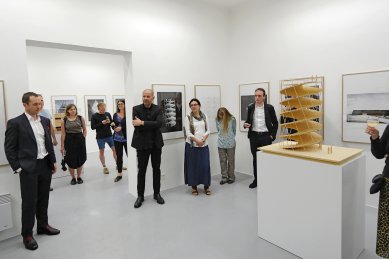
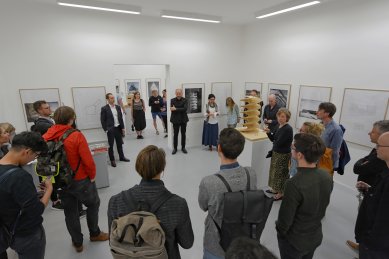
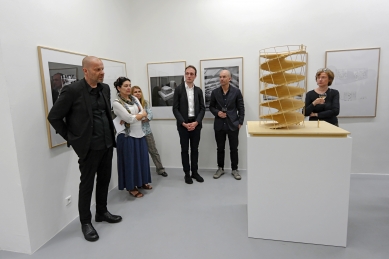

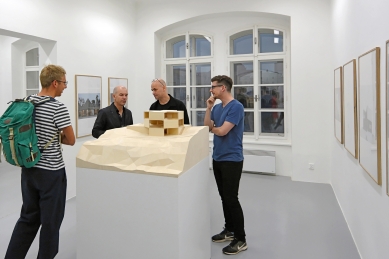

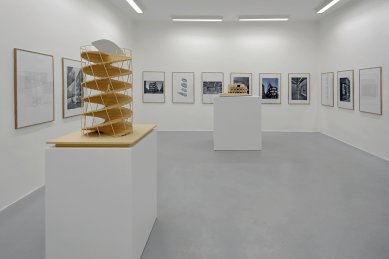
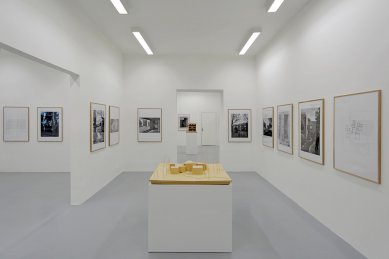
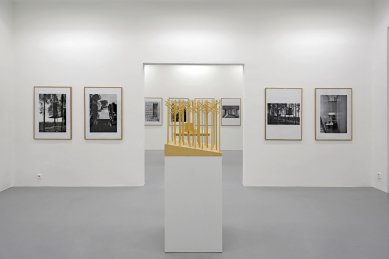
0 comments
add comment











